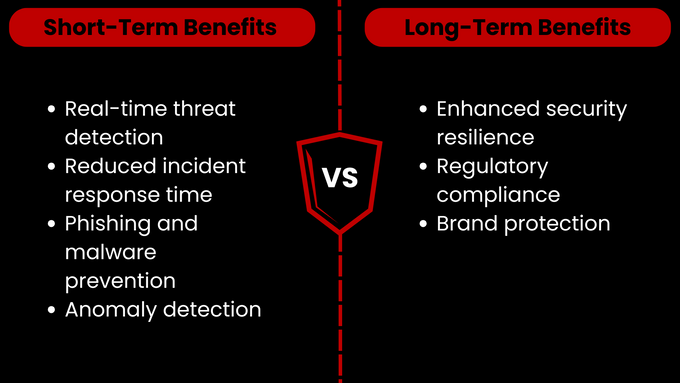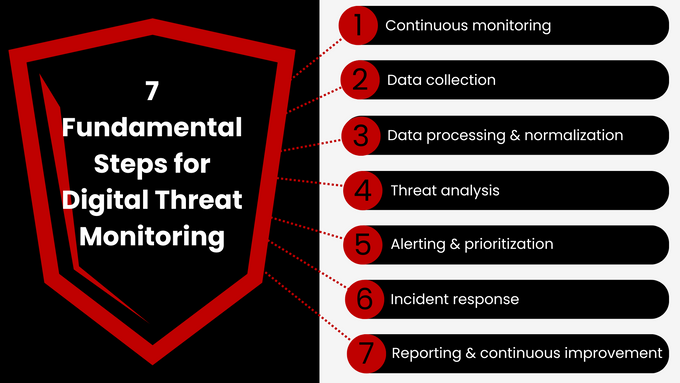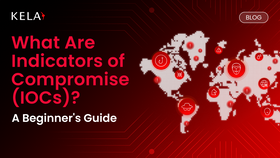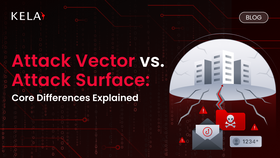Digital Threat Monitoring: How It Works and Why It's Important
Digital threat monitoring is a continuous, proactive approach, actively scrutinizing network traffic, system logs, user behavior, and external threat intelligence. These tools are no longer optional, but essential for proactive defense against the growing world of cybercrime.
Published July 2, 2025
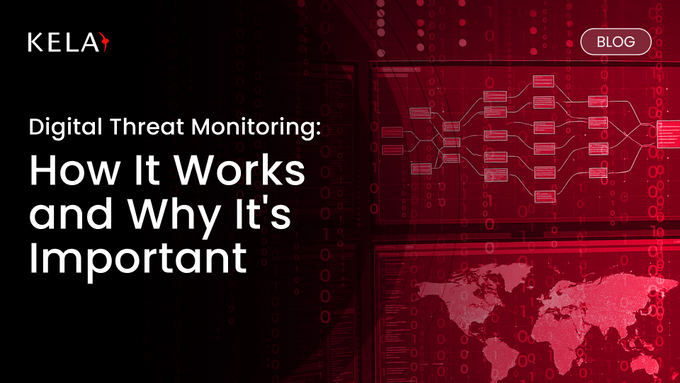
In today's hyper-connected world, cybercrime looms larger than ever. Businesses and individuals alike face a constant barrage of digital threats, from sophisticated ransomware attacks to subtle data breaches. The sheer volume and complexity of these threats can be overwhelming, amounting to over 4.3 million infected machines in 2024.
This stark statistic underscores the vulnerability that exists even within seemingly secure systems, emphasizing the need for robust digital threat monitoring. This blog post will delve into the mechanics of digital threat monitoring, exploring how it works and why it's an indispensable component of modern cybersecurity.
» Contact us to learn more about managed cybersecurity
What Is Digital Threat Monitoring?
Digital threat monitoring goes beyond traditional perimeter defenses. It's a continuous, proactive approach, actively scrutinizing network traffic, system logs, user behavior, and external threat intelligence.
This comprehensive surveillance aims to detect subtle anomalies and suspicious activities that signal potential cyberattacks. By identifying these indicators in real-time, organizations can preemptively respond, mitigating damage before it occurs.
Unlike reactive firewalls and endpoint protection that operate primarily on known threat signatures, digital threat monitoring leverages behavioral analysis and threat intelligence to uncover emerging and unknown threats. This allows for a dynamic defense posture, adapting to the ever-evolving cyber landscape.
Types of Threats Detected by Digital Threat Monitoring
- Malware and ransomware: Suspicious file behavior, network anomalies, and known malware signatures.
- Insider threats: Unauthorized access and malicious behavior are revealed by monitoring user activity, access logs, and data exfiltration attempts.
- Phishing and social engineering: Malicious links and suspicious communications are identified through analysis of email traffic and web activity.
- Advanced persistent threats (APTs): Subtle network anomalies and long-term infiltration attempts are detected through monitoring.
- Data breaches and leaks: Unauthorized data access and exfiltration are revealed through monitoring, along with data appearing on dark web sites.
» Learn more about how hackers breach and exploit your data
Internal vs. External Threat Monitoring
Internal
Internal digital threat monitoring is focused on activities that occur within an organization's network and systems, such as:
- Logs
- Network traffic
- User behavior
These aspects are analyzed to detect threats that originate from employees, contractors, or compromised internal devices.
External
External digital threat monitoring is conducted to scan the broader internet, dark web, and social media for threats that come from outside the organization. This includes monitoring for:
- Mentions of the brand
- Data leaks
- Malicious activities targeting the organization's public-facing assets
Pro tip: A holistic security view is essential through the complementary nature of both monitoring types. Threats that may have bypassed perimeter defenses are detected by internal monitoring, while external monitoring offers early warnings of emerging threats and potential attacks.
» Make sure you know the differences between vulnerabilities vs. threats vs. risks
Short-Term & Long-Term Benefits of Digital Threat Monitoring
Short Term (Immediate Protection)
- Real-time threat detection: Continuous monitoring is utilized for the immediate identification of malicious activity, allowing for rapid containment of attacks. This includes actions such as blocking malicious IPs, isolating infected systems, and stopping ransomware.
- Reduced incident response time: Automated alerts and detailed logs are generated by monitoring tools, streamlining incident investigation and response. This enables security teams to react faster to unfolding situations.
- Phishing and malware prevention: Monitoring of email traffic and web activity is conducted to detect and block phishing attacks and malware downloads in real-time, preventing users from becoming victims of these common attack vectors.
- Anomaly detection: Unusual system or user behavior is detected through digital threat monitoring, which can indicate a threat that is not based on a signature.
Long Term (Enhanced Security Resilience)
- Enhanced security resilience: Continuous analysis of threat data allows organizations to identify vulnerabilities and strengthen their security posture against future attacks. This includes improvements in security policies, patching vulnerabilities, and fortifying network defenses.
- Regulatory compliance: Comprehensive monitoring offers the audit trails and documentation necessary to demonstrate compliance with industry regulations and data privacy laws. This assists in meeting requirements such as GDPR, HIPAA, and PCI DSS.
- Brand protection: Proactive threat detection and analysis helps organizations identify and mitigate potential risks before they materialize, which reduces the likelihood and impact of cyber incidents. This helps in avoiding financial losses and reputational damage.
» Want to learn more about how hackers operate? These are the most-targeted entry points by hackers
How Digital Threat Monitoring Works: 7 Fundamental Steps
1. Continuous Monitoring
Effective continuous monitoring is achieved through tailored approaches for each digital environment:
Corporate networks:
- Network traffic analysis: Network intrusion detection systems (NIDS) and network traffic analysis (NTA) tools are implemented to monitor for malicious activity, lateral movement, and data exfiltration.
- Endpoint detection and response (EDR): EDR solutions are deployed to monitor endpoint activity, detect malware, and identify suspicious user behavior.
- Log management and SIEM: Log collection and analysis are centralized using security information and event management (SIEM) systems to correlate events and detect complex threats.
Cloud infrastructures:
- Cloud security posture management (CSPM): CSPM tools are utilized to monitor cloud configurations, identify misconfigurations, and ensure compliance with security best practices.
- Cloud workload protection platforms (CWPP): CWPP solutions are deployed to monitor cloud workloads, detect malware, and protect against container and serverless threats.
- API monitoring: API monitoring is the process of consistently observing and tracking the performance, availability, and functionality of application programming interfaces (APIs). API traffic is monitored for anomalies, unauthorized access, and data leakage.
» Did you know? Ransomware groups are now selling direct network access
Supply chains:
- Third-party risk management (TPRM): TPRM programs are implemented to assess the security posture of suppliers and identify potential risks.
- Supply chain visibility: Monitoring tools are used to track data flow and access across the supply chain, identifying potential vulnerabilities.
- Vendor risk assessment: Vendors are continuously monitored for changes in their security posture and for any potential security breaches that could affect the organization.
2. Data Collection
Relevant data is gathered from various sources, including network traffic logs, system logs, endpoint activity, cloud logs, and security device logs. All critical systems and applications are monitored, including:
- Threat intelligence platforms: Contextual information about current and emerging threats is provided by threat intelligence, including attacker tactics, techniques, and procedures (TTPs). It enables organizations to understand the motivations and capabilities of threat actors, allowing for proactive defense against targeted attacks. Threat intelligence feeds are integrated into monitoring tools to enhance detection capabilities and inform incident response decisions.
- Dark web monitoring: Searching hidden online networks for stolen credentials, leaked data, and discussions about planned attacks is conducted through dark web monitoring. This provides early warning of potential data breaches, allowing organizations to take proactive measures to mitigate risks.
- Open-source intelligence (OSINT): Gathering and analyzing publicly available information from sources such as social media, news articles, and public databases is involved in OSINT. This provides insights into potential threats, vulnerabilities, and attacker activities. OSINT is utilized to identify potential attack vectors, monitor threat actor activity, and enhance situational awareness, serving as a significant source of threat intelligence.
» Not convinced? Here are some more reasons you need cyber threat intelligence
3. Data Processing and Normalization
Collected data is processed and normalized to create a consistent and usable dataset. Logs are parsed, irrelevant information is filtered out, and data formats are standardized and correlated with other relevant data sources to establish context and identify patterns.
This data is often enriched with external threat intelligence to identify known malicious actors and aggregated to provide higher-level views of potential threats. The normalized data is then used to establish a baseline of normal network activity before moving onto the next step.
4. Threat Analysis
Processed data is examined for anomalies, suspicious patterns, and indicators of compromise (IOCs). Security information and event management (SIEM) systems, behavioral analytics, and threat intelligence are utilized to identify potential threats, with automated tools and human analysts collaborating to correlate events and detect complex attacks.
» Learn more: The role of a threat intelligence analyst
5. Alerting and Prioritization
When a potential threat is identified, an alert is generated and prioritized based on severity and potential impact. This prioritization ensures that the most critical threats are addressed promptly, often driven by a risk scoring system.
Popular Risk Scoring Systems
CVSS (Common Vulnerability Scoring System)
CVSS is designed to provide a standardized way to assess the severity of software vulnerabilities. It's not about the attack itself, but rather the inherent weakness in the software. CVSS uses a set of metrics that are grouped into 3 categories:
1. Base Metrics—These discuss the intrinsic qualities of the vulnerability itself and include:
- Attack vector (AV): How the vulnerability can be exploited (e.g., local, network).
- Attack complexity (AC): The conditions required to exploit the vulnerability.
- Privileges required (PR): The level of access an attacker needs.
- User interaction (UI): Whether user interaction is required.
- Scope (S): Whether the vulnerability affects components beyond the vulnerable one.
- Confidentiality, integrity, and availability (CIA) impact: The effect on data confidentiality, integrity, and system availability.
2. Temporal Metrics—These consider factors that change over time and include:
- Exploit code maturity (E): The current state of exploit code availability.
- Remediation level (RL): The availability of patches or workarounds.
- Report confidence (RC): The reliability of the vulnerability report.
3. Environmental Metrics—These consider factors specific to an organization's environment and include modifications and adjustments to base metrics.
The system then calculates a numerical score based on these metrics where a higher score indicates a more severe vulnerability that needs to be patched urgently.
Custom Risk Scoring
Organizations can create custom risk scoring systems to tailor risk assessment to their specific needs and priorities. This allows them to consider factors that are unique to their business, such as the value of specific assets or the sensitivity of certain data.
Custom risk scoring systems typically involve:
- Identifying relevant factors: Organizations identify the factors that are most important to their risk assessment. This might include asset criticality, threat intelligence, and compliance requirements.
- Assigning weights: Each factor is assigned a weight that reflects its relative importance.
- Developing a scoring model: A scoring model is created that combines the weighted factors to produce a risk score.
Examples of relevant factors include:
- Asset criticality: These factors include business impact, data value, and system availability, where critical assets (such as servers hosting sensitive data) receive higher scores.
- Threat intelligence: These factors include threat actor profiles, attack patterns, and malware signatures where known threat actors targeting the organization or its industry increase the risk score.
- Data sensitivity: These factors include compliance requirements, data classification, and potential impact of a data breach where sensitive information (such as customer or financial data) increases the risk score.
- Vulnerability severity: CVSS scores are often incorporated into custom risk scoring systems.
- Business impact: This is a general measurement of how much damage a successful attack would cause to the business.
6. Incident Response
Once a threat is confirmed, actions are taken by the incident response team to contain, eradicate, and recover from it. Established incident response procedures and playbooks are followed, which may include:
- Isolating affected systems
- Blocking malicious traffic
- Escalating threats to relevant departments
- Restoring data from backups
Pro tip: It's essential to ensure that your incident response plan is effectively documented with clear roles and responsibilities outlined that all employees can access easily.
7. Reporting and Continuous Improvement
The incident is documented and lessons learned are used to enhance the threat monitoring process and incident response plan against future attacks. This involves refining detection rules, updating incident response procedures, and improving security controls.
» Stay up to date with the future state of cybercrime
Common Digital Threat Monitoring Challenges and Solutions
| Aspect | Challenge | Solutions |
|---|---|---|
| Data Overload and Alert Fatigue | Security teams can be overwhelmed by the sheer volume of data generated by monitoring tools, resulting in alert fatigue and missed threats. | Implement robust alert prioritization based on risk and severity, utilize SIEM and SOAR platforms to automate alert correlation and minimize false positives, and fine-tune monitoring rules and thresholds to filter out noise and concentrate on critical events. |
| Lack of Skilled Personnel | Specialized skills in threat analysis, incident response, and security tool management are required for digital threat monitoring. | Implement ongoing training and certification programs for security staff, outsource monitoring to managed security service providers (MSSPs), and utilize threat intelligence platforms that provide contextual information. |
| Integration and Interoperability Issues | The integration of diverse security tools and data sources can be complex, leading to interoperability issues and data silos. | Choose monitoring solutions that offer open APIs and support industry-standard data formats, prioritize platforms that provide seamless integration with existing security infrastructure, and invest in tools from vendors with established integrations. |
» Need more help? See these reasons MSSPs should embrace a CTI solution
Leverage the Power of Digital Threat Monitoring With KELA
The digital threat landscape is in constant flux, marked by increasingly sophisticated attacks, expanding attack surfaces, and stringent data privacy regulations. To effectively navigate these challenges, organizations must adopt advanced threat monitoring solutions powered by AI, automation, and comprehensive threat intelligence. These tools are no longer optional, but essential for proactive defense.
In this evolving environment, cyber threat intelligence platforms like KELA Cyber play a critical role. KELA specializes in providing actionable insights from the dark web and criminal underground, offering organizations a significant advantage by anticipating emerging threats, proactively mitigating risks, and bolstering their defenses against the complex cyberattacks of the future.
» Ready to secure your organization? Try KELA for FREE

